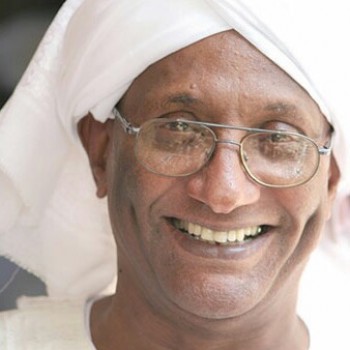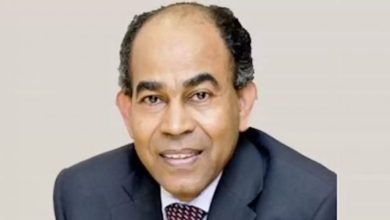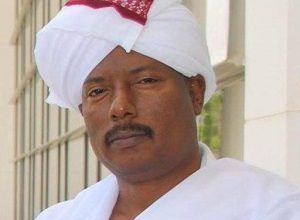If Hassan Mahmoud Al-Reeh’s book “Abdel Khaliq Mahjoub: Awareness and Lantern Flowers” on July 19 coup and its aftermath had not been published, no one would have missed it

Abdullah Ali Ibrahim
February 17, 2021
(Hassan Mahmoud Al-Reeh published an article about the July 19 coup. I commented on his book “Abdel Khaliq Mahjoub: Awareness and Lantern Flowers”, questioning his qualifications to write history, except for groaning and confrontation.
The book even contradicted its title, as we will see)
If Hassan Mahmoud Al-Reeh’s book “Abdel Khaliq Mahjoub: Awareness and Lantern Flowers” on July 19 coup and its aftermath had not been published, no one would have missed it. It took us back without the need for “the investigative journal” in studying the coup. It is the boring search for who did it 50 years after it happened.
I said in my book “The July 19 Coup: From the investigative journal to the realm of history” that understanding the issues raised by the coup will not come to us unless we refer it to the realm of history. “Awareness and the Lantern Flowers” did not take us from the daily investigation to the spaciousness of history. The matter was made worse because it is a special case of negligent writing.
It is not even what we call a book from its title. The reader of the book’s title thinks that the writer has a good opinion of our professor Abdel Khaliq Mahjoub as a man who brought awareness to the people so that lanterns bloomed among them.
But the writer has an opinion other than what is in the title.
Abdel Khaleq, even if he possessed awareness as the writer describes him, his awareness is a stagnant market. He did not anticipate with his described awareness a coup, in the writer’s words, his few supporters “the lantern flowers I think” came out with screaming red slogans to be torn apart by the masses of a traditional Muslim people led by an Islamic and Sufi sectarianism rooted in its social fabric.
It is a general statement that the writer believes that our professor has an infectious awareness while his opinion is that his belief itself has no place in Sudan and that his flowers are foolish dreams.
On the other hand, the writer is explicit in his belief that Abdel Khaliq is a conspirator who betrays trust.
Not only did he plan the coup until zero hour with the communist officers, but he also concealed it from the party establishment. When the coup took place, he summoned Hashim al-Atta, the coup leader, to a meeting of the party’s central committee to ask him about his coup tactics that had confused their calculations in the presence of Abdel Khaliq, who had planned the coup in the first place. If our professor had had the courage, Hashim would have been spared this reproach and confessed to his crime. On the third hand, Abdel Khaliq is either an idiot or an informant.
In a story told by the author, it says that he “disclosed” everything about the coup in his meeting with Nimeiri after his arrest. So “Abdel Khaliq explained everything. The details of the details and the names of the participants . . . Accordingly, many people who were not arrested were arrested.” I do not know how this reconciles with a man described by the author as aware, and you see him selling lantern flowers in the market of the Tree Trials. The book is written carelessly in two ways. The author is not concerned with verifying the information he provides.
The stories coexist with him, even if they are extremely controversial. He said that Abdel Khaliq headed to his home in Omdurman after being smuggled out of his detention center in the Ammunition Corps before the coup, longing for his wife and two children. When his longing was over, he went to hide in the home of Abu Shaiba, the commander of the Republican Guard and later a member of the July 19 coup council, within the Republican Palace.
The narrator did not forget that Abdel Khaliq was perfuming himself with perhaps his favorite scent of Shabroishi.
This account is at odds with the author’s portrait of the homes that Abdel Khaliq visited to secure himself after his release from detention.
He said that after the liberation, Abu Shaiba brought him to his home in the palace, then he moved to the home of Kamal Ramadan, the lawyer, then to the home of Mirghani Mahjoub.
He met his small family in the home of Mohamed al-Naiem Muheid in the university district of Burri. The author did not even deign to point out this distortion in the conflicting information in his book. The book is full of errors in individual information.
He said that Joseph Garang, a minister in Nimeiri’s government at the time, after the corruption between it and the Communist Party, was detained until the coup released him, while Joseph was in the hospital at the time, taking care of his sick son with his wife. He said that Fatima Ahmed Ibrahim did not attend the party’s central committee meeting on the evening of July 19 because she was crying for her father.
I do not know exactly when her father died, but she was at her home in Burri Al-Mahas with her husband Al-Shafi’ Ahmed Al-Sheikh on the day and evening of the coup.
Ghazi Suleiman narrated how he went to them after Hashim Al-Atta sent him to Al-Shafi’ to write him the coup statement.
The author said that Khalid Al-Kad fled after the coup to the town of Al-Qurayr in the north and hid among his family.
He married Fatima, who served him while he was in isolation. It is known that Khalid’s hideout was in the house of his Dinka uncle in the village of Al-Bar, east of Kurti. He also said that Ahmed Fouad and Ahmed Hamroush, who were sent by Sadat to investigate the coup in Sudan, were among those included in the Egyptian Communist Party (Hastu) with Abdel Khaliq.
In fact, the party that included them was the Egyptian Democratic Movement for National Liberation (Hadtu). (Hastu) is the initials of the Sudanese Movement for National Liberation, which was established in Sudan in 1946 under the leadership of Dr. Abdel Wahab Zein El Abdin Abdel Tam. The author provided two pictures without identifying who they were.
He provided a picture of the son of (Dakhla Atabra) , Mohamed Osman Khalaf Allah Omar “Karn” and said that it was of Mohamed Ibrahim Naqud. He named the person in the picture with Al-Shafi’ Ahmed Al-Sheikh, the head of the Workers’ Union, as Abdel Rahman Abdel Rahim from Al-Wasila, one of the founders of the Communist Party, while he was Al-Hajj Abdel Rahman, the deputy secretary of the Workers’ Union.
The author has ambiguous sentences in the composition, such as his saying, “The prominent Abroufi communist, Dr. Abdel Qader Al-Rifai Al-Arki, accused Hamad Al-Nil.” He did not separate between “Abdul Qader Al-Rifai” and “Al-Arki Hamad Al-Nil” with anything so that the reader would know that Al-Rifai accused Al-Arki and not that Al-Arki is Al-Rifai’s grandfather.
This is too much. Next time, we will look at the weakness of the author’s approach even in opening the daily Al-Tahri to search for those who carried out the July 19 coup, which took us back to the distorted approach of “Al-Tahri Daily”.
It was hoped that we would move on from it to the approach of historical analysis that localizes the coup in the political and social conflict since the forties



